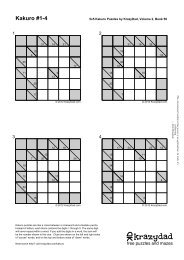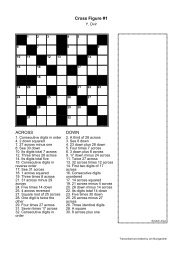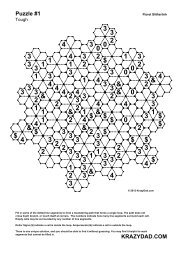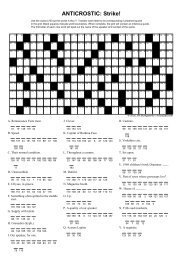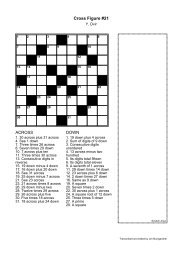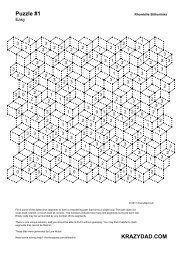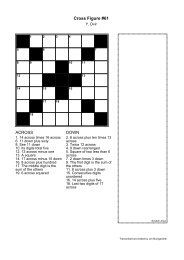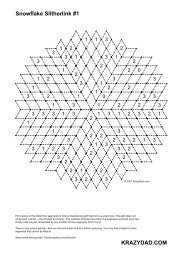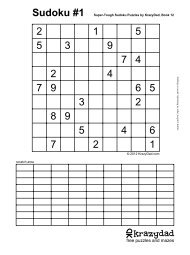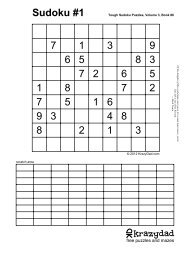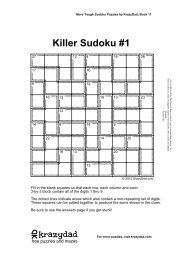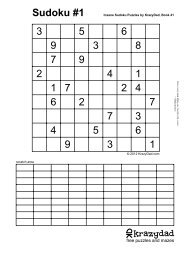The Whitney Music Box - KrazyDad
The Whitney Music Box - KrazyDad
The Whitney Music Box - KrazyDad
You also want an ePaper? Increase the reach of your titles
YUMPU automatically turns print PDFs into web optimized ePapers that Google loves.
<strong>The</strong> <strong>Whitney</strong> <strong>Music</strong> <strong>Box</strong><br />
Jim Bumgardner<br />
10066 Orcas Ave<br />
Shadow Hills, CA, 91040, USA<br />
E-mail: jbum@jbum.com<br />
Website: krazydad.com<br />
Abstract<br />
I describe my musical realization of the motion graphics of experimental animation pioneer John <strong>Whitney</strong>. <strong>The</strong><br />
<strong>Whitney</strong> <strong>Music</strong> <strong>Box</strong> casts John <strong>Whitney</strong>’s visual idea of “incremental drift” into musical form.<br />
About John <strong>Whitney</strong><br />
John <strong>Whitney</strong> (1917-1995) was an innovative filmmaker who pioneered a number of methods for<br />
producing experimental animations based on precisely defined motions. All his life, perhaps beginning<br />
with his youthful obsession with the Mount Palomar telescope, <strong>Whitney</strong> was especially interested in the<br />
mathematics of circles, including polar coodinates and sine waves. <strong>Whitney</strong>'s earliest films, made with<br />
his brother James during the 1940s, used a pendulum device to produce music and graphics<br />
simultaneously.<br />
In the 1950s, <strong>Whitney</strong> converted a surplus World War II analog computer, originally used in the sighting<br />
mechanism of an anti aircraft gun into a versatile and accurate motion control rig, the first of its kind.<br />
This "cam machine," was used by the <strong>Whitney</strong> brothers to realize a series of commercial film effects as<br />
well as more personal experimental films all featuring elaborate and fluid abstract motions. In their films,<br />
they used multiple exposures while rotating both the camera and a variety of photographed objects and<br />
light sources, all moving in complex paths, such as nested arcs. <strong>The</strong> striking spiraling figures in the Saul<br />
Bass designed opening credits of Vertigo, were animated by <strong>Whitney</strong> on this equipment, as well as<br />
James' most successful movie, the mandala-like Lapis.<br />
In the early 1960s, <strong>Whitney</strong> changed his medium from analog to digital, and began making a series of<br />
pioneering computer graphics shorts, including his 1968 film, "Permutations". <strong>Whitney</strong> continued<br />
working in the computer graphics field until his death in 1995, making the film Arabesque and the film<br />
series Moon Drum.<br />
<strong>Whitney</strong>’s films were highly geometrical in nature, often consisting of nothing more than colored points<br />
of light, moving over mathematically defined paths, such as sine waves, controlled by either electromechnical<br />
or digital computation. <strong>Whitney</strong> was principally interested in the cumulative effect of these<br />
motions on the viewer.<br />
Incremental Drift. <strong>The</strong> motions of the objects in <strong>Whitney</strong>'s mid to later films often were based around<br />
a type of mathematically choreographed motion <strong>Whitney</strong> called "incremental drift." <strong>Whitney</strong> described<br />
incremental drift in his 1980 book, Digital Harmony, in which he elaborated on his belief that the the<br />
mathematical properties of music could be applied to motion graphics on a computer.
An early intuition about how to control total dynamics led me to activate all graphics elements<br />
through a motion function that advances each element differentially. For example, if one element<br />
were set to move at a given rate, the next element might be moved two times that rate. <strong>The</strong>n the<br />
third would move at three times that rate and so on. Each element would move at a different rate<br />
and in a different direction within the field of action. So long as all elements obey a rule of<br />
direction and rate, and none drifts about aimlessly or randomly, then pattern configurations form<br />
and reform. This is harmonic resonance and it echoes musical harmony, stated in explicit terms.<br />
I tried this procedure in several films, and was gratified by the consistency of the confirmation it<br />
demonstrated.<br />
– John <strong>Whitney</strong>, Digital Harmony, pp. 38<br />
<strong>The</strong> <strong>Whitney</strong> <strong>Music</strong> <strong>Box</strong><br />
In the book, <strong>Whitney</strong> goes on to describe a few simple examples of this type of motion. <strong>The</strong> book<br />
contains sample code in the back, in the BASIC programming language. One of those examples is<br />
constructed of points moving around a series of increasingly wider concentric circlular paths.<br />
I noticed the resemblence of the circular paths to the dots on the disc of a music box, and thought it would<br />
be interesting to use <strong>Whitney</strong>'s dots to trigger a series of notes on a chromatic scale. Although this<br />
arrangement is very similar to a regular music box equipped with chromatically tuned tines, the rotational<br />
speed of the dots differs in a way that can't be produced with a single disc - rather such a music box<br />
would require a single disc or cylindar for each dot, each moving at a slightly faster speed.<br />
Much like <strong>Whitney</strong>, I was "gratified" by the quality of<br />
the music this system generated, and even more so by<br />
the effect of listening to the music while watching the<br />
animation that triggered it [Figure 1]. What to the ear<br />
sounds like a complex piece of music becomes more<br />
lucid when the eyes are confronted with the evidence of<br />
a relatively simple and predictable system of motions<br />
triggering those sounds. <strong>The</strong> overall effect can<br />
produce a strong sense of wonderment in the listener /<br />
viewer, which I found pleasing.<br />
I went on to produce a series of variations of this basic<br />
experiment, using different numbers of dots, tunings<br />
(both chromatic, harmonic, and modal, with forward<br />
and retrograde assignments) as well as a few different<br />
methods of sound production.<br />
Figure 1 :<br />
<strong>The</strong> <strong>Whitney</strong> <strong>Music</strong> <strong>Box</strong><br />
A close inspection of <strong>Whitney</strong>'s writings reveals that he was much more of an artist than a mathematician.<br />
<strong>The</strong> mathematics of <strong>Whitney</strong>'s movies can be quite simple, based on nothing more than the simple integer<br />
ratios of Pythagoras. Like medieval music theorists, <strong>Whitney</strong> believed that the appeal of his animations,<br />
like the appeal of tonal music, was based on these simple ratios.<br />
For the casual mathematician, and casual listener, the <strong>Whitney</strong> <strong>Music</strong> <strong>Box</strong> provides a beautiful and<br />
fascinating introduction to some elementary and beautiful mathematical ideas.<br />
For more information about this project, including an online Flash demonstration, visit<br />
http://www.coverpop.com/whitney/



